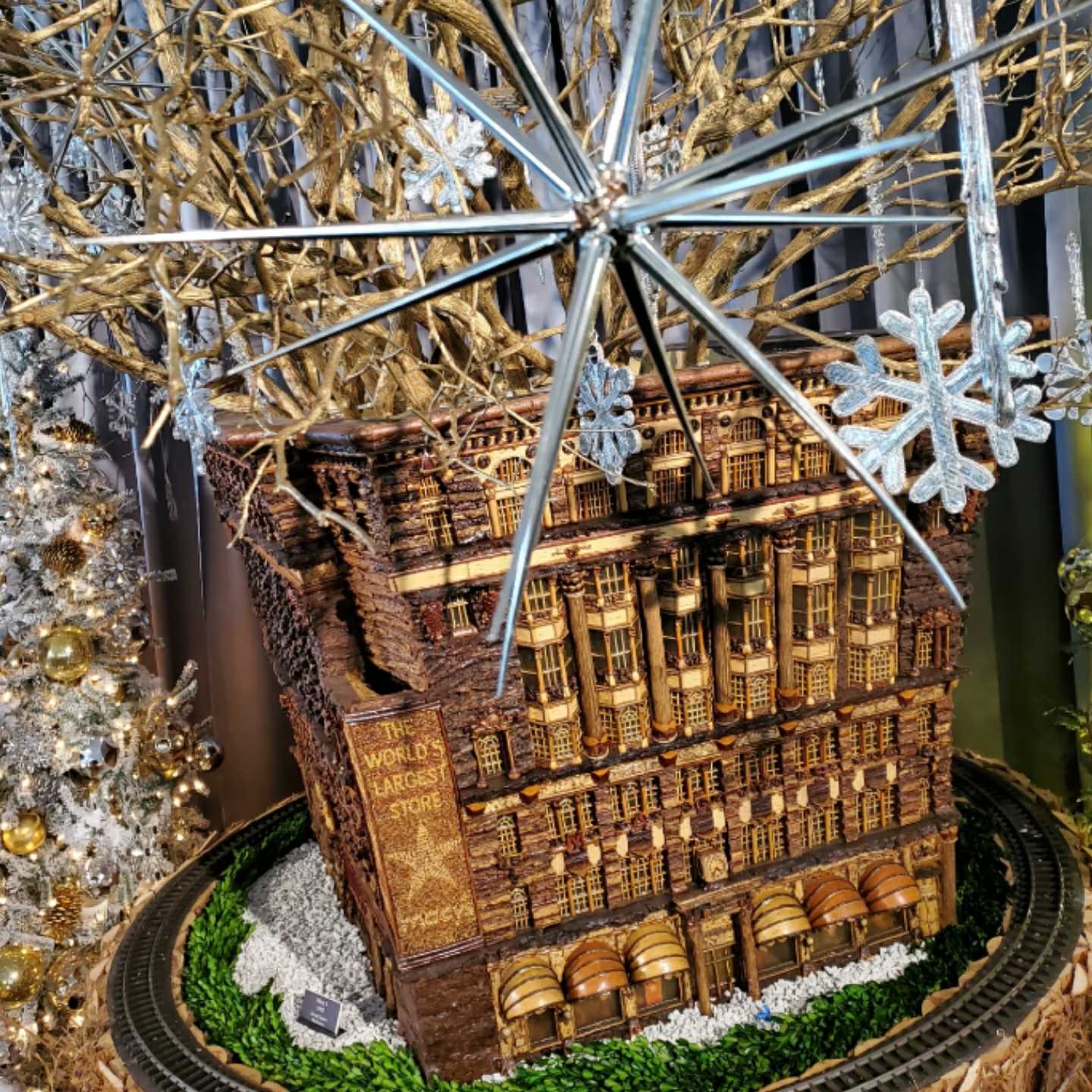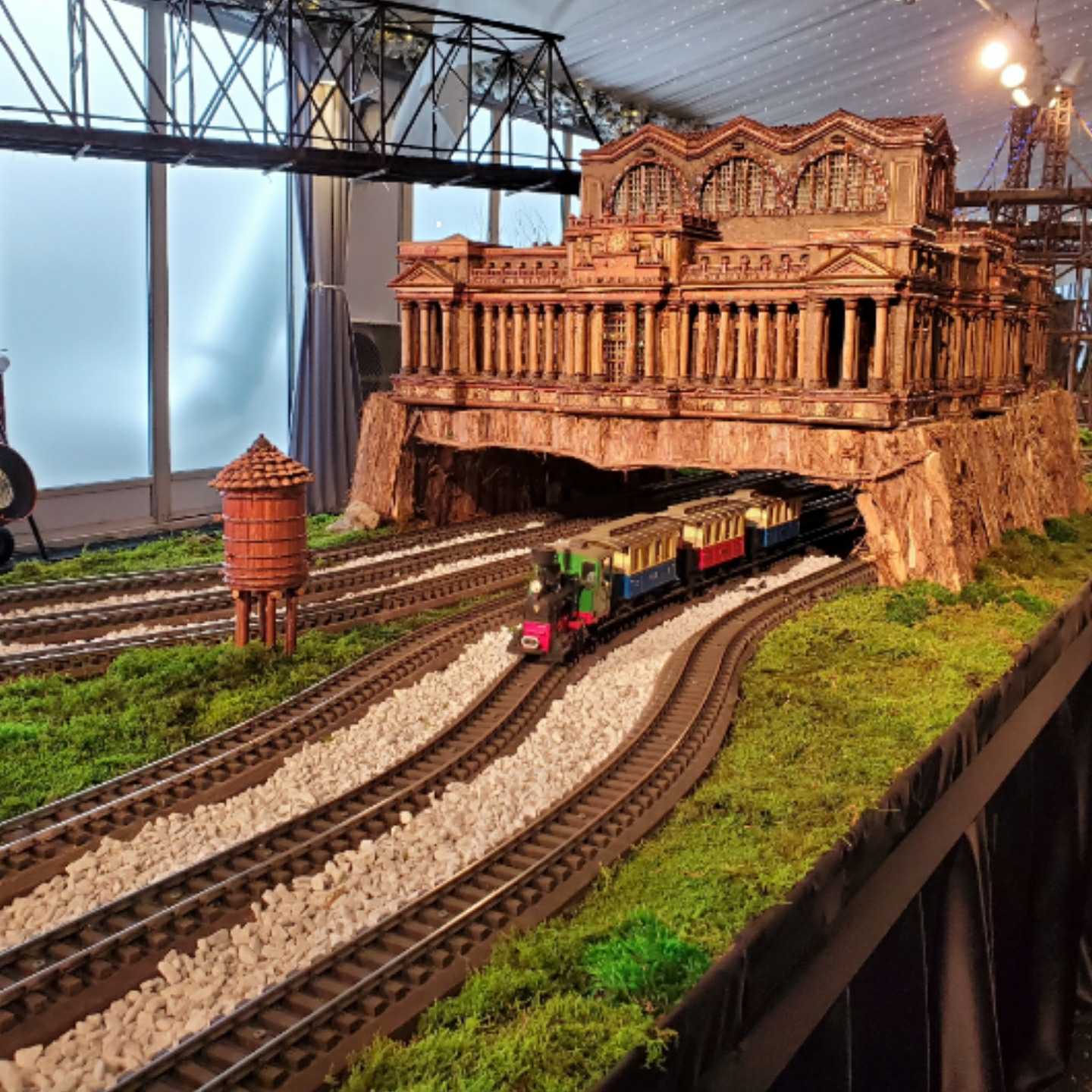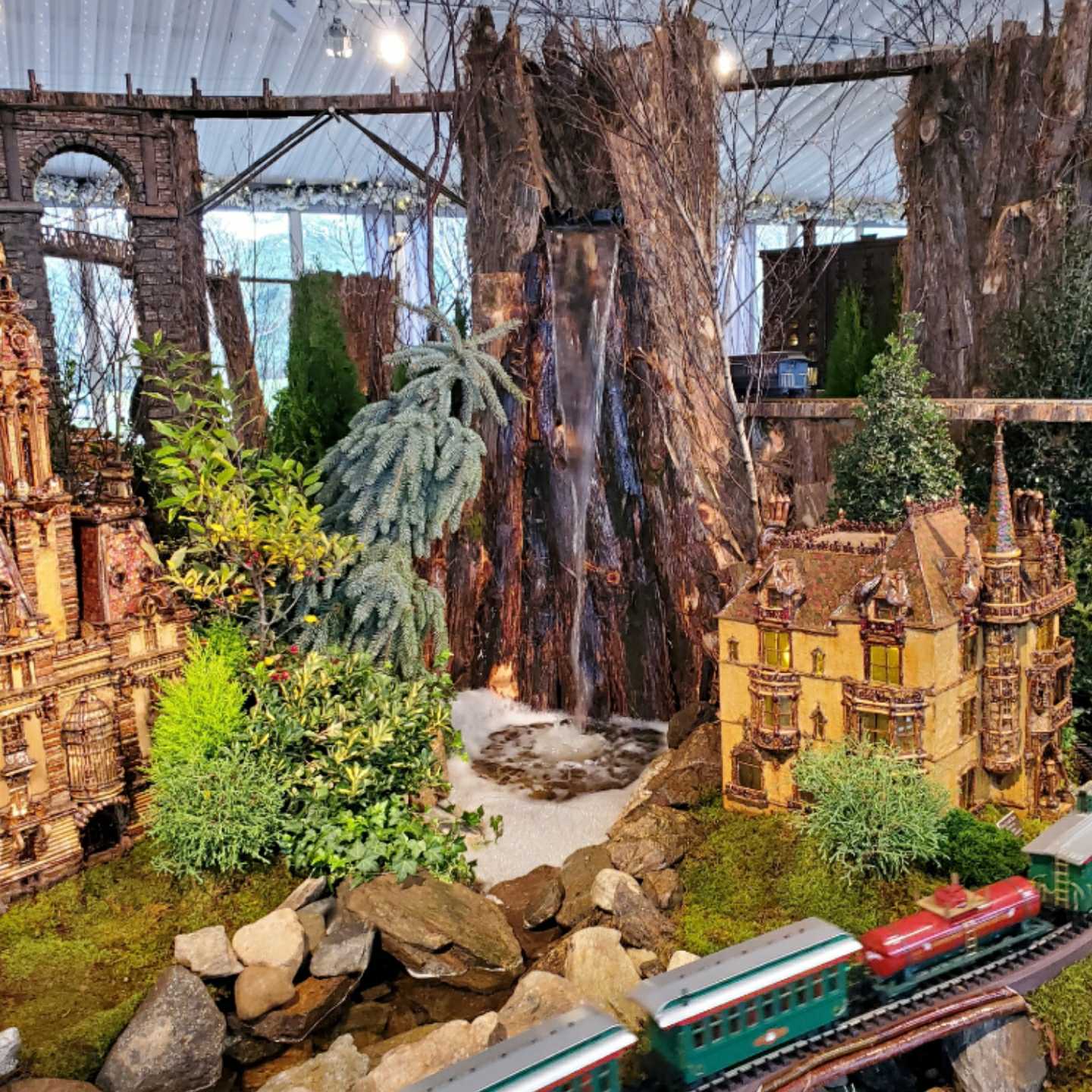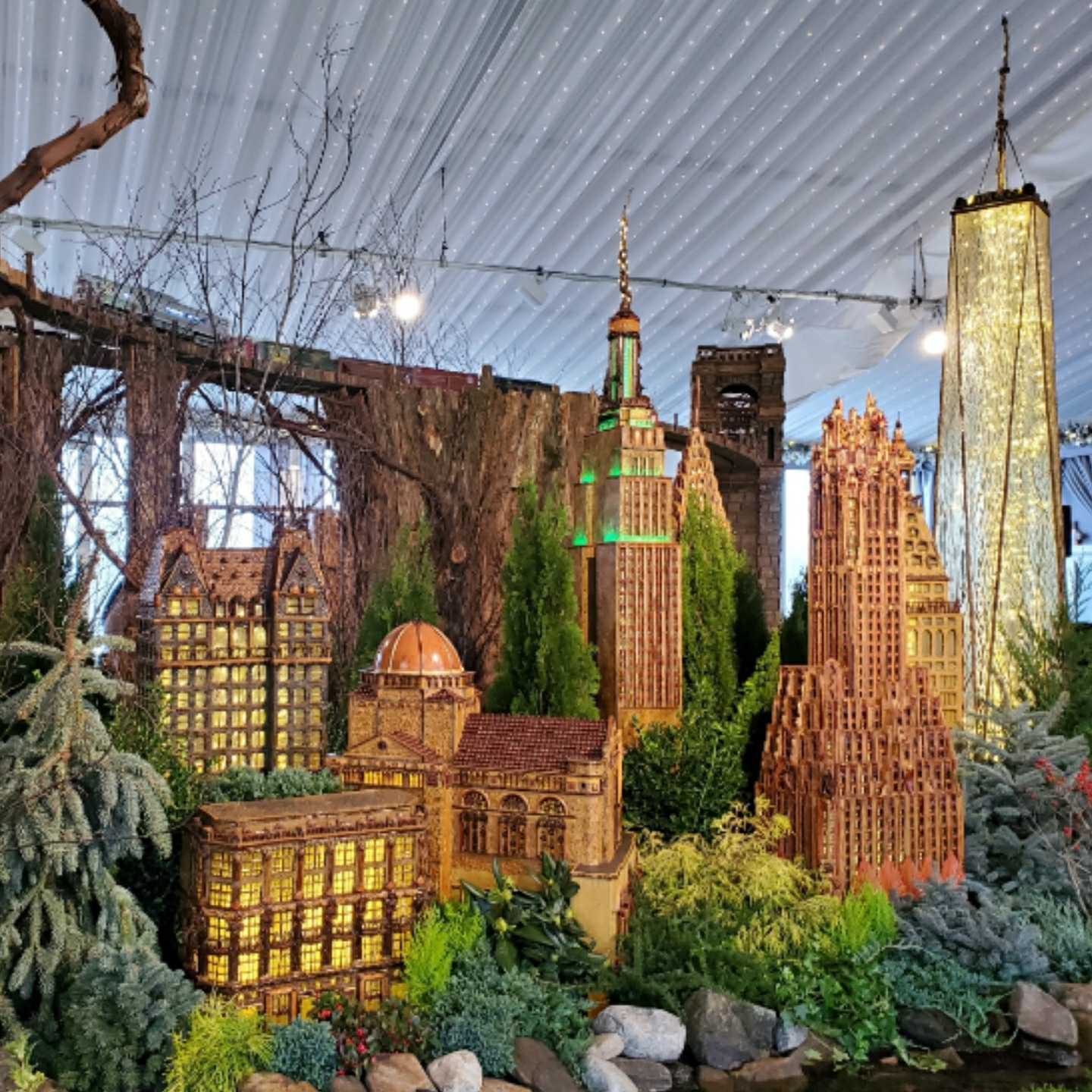‘Take a mystical sleigh ride into a capricious world of architecture and history. An annual holiday event worth traveling across the country and world for.’ – 360 MAGAZINE
NYBG’s 28th Annual Holiday Train Show® Showcases Central Park, with New Replicas of Its Iconic Architectural Treasures, Including Belvedere Castle, Bethesda Terrace, and the Dairy November 23, 2019–January 26, 2020 NYBG’s 28th
Annual Holiday Train Show showcases Central Park and its architectural features, including the Belvedere Castle, Bethesda Terrace, and the Bow Bridge.
The New York Botanical Garden’s Holiday Train Show® showcases Central Park—the most popular urban park in America—in the 28th year of this much-loved holiday event. Visitors are transported to a miniature metropolis as model trains zip through an enchanting display of more than 175 New York landmarks, each re-created from natural materials such as birch bark, lotus pods, acorns, and cinnamon sticks. The Holiday Train Show runs Saturday, November 23, 2019, through Sunday, January 26, 2020.
New replicas of Central Park’s iconic architectural treasures include Belvedere Castle, Bethesda Terrace, the Dairy, the Naumburg Bandshell, and two graceful pedestrian bridges. They are arrayed in a tableau with existing Central Park replicas in NYBG’s collection, including the Swedish Cottage Marionette Theater and the Old Bandstand. In addition, famous New York buildings that are either next to the park or just inside it are on display, including the Plaza Hotel, the Metropolitan Museum of Art, the Solomon R. Guggenheim Museum, and the Rose Center for Earth and Space, part of the American Museum of Natural History.
This year, the Holiday Train Show is presented in an immersive indoor winter wonderland adjacent to the Enid A. Haupt Conservatory as the Conservatory’s palm dome undergoes restoration, part of the routine maintenance and operations of the Botanical Garden’s facilities. The spacious, climatecontrolled exhibition space is located on the Conservatory Lawn.
Central Park, designed in 1858 by landscape architects Frederick Law Olmsted and Calvert Vaux, occupies not only the middle of Manhattan but also a special place in the hearts of New Yorkers and in the American imagination. Visited by more people than any other urban park in the United States, it has been featured in hundreds of movies. Perhaps even more important, Olmsted and Vaux’s “Greensward Plan” inspired cities across the country to set aside large open spaces as public parks.
A striking feature of their design was the wide variety of buildings and architectural elements they included to complement the natural setting. The Belvedere Castle was built as a Victorian “folly” on the highest natural elevation in the park, offering visitors a “beautiful view”—the English translation of its Italian name. Completed in 1872, the turreted castle includes Gothic, Romanesque, Chinese, Moorish, and Egyptian motifs. In June 2019, the Belvedere reopened after a 15-month restoration.
Bethesda Terrace opens on the Lake at the heart of Central Park. The 1873 Angel of the Waters sculpture crowns the Terrace’s majestic Bethesda Fountain. In one hand, the angel holds a lily, a symbol of purity. Designer Emma Stebbins, the first woman to receive a public art commission in New York City, likened the healing powers of the angel to that of the Croton water system, which brought clean, fresh water to the city beginning in 1842.
The Dairy, built in 1870, was intended as a place where children could enjoy a glass of fresh milk, which was not always easy to get in mid-19th-century New York. The hybrid design is a playful combination of a Swiss chalet and a Gothic country church. The Naumburg Bandshell, a neoclassical structure of cast concrete built in 1923, has hosted performers from Irving Berlin and Duke Ellington to the Grateful Dead.
The Swedish Cottage Marionette Theater was Sweden’s exhibit at Philadelphia’s Centennial Exposition in 1876. The enchanting Swedish architecture and craftsmanship, suggestive of a model schoolhouse, caught Olmsted’s eye, and he brought it to the park in 1877.
A theater designed for marionette performances was built inside in 1973. The Old Bandstand was a 1862 Victorian-style cast-iron bandstand designed by Jacob Wrey Mould. It was demolished in 1922 to make way for the Naumburg Bandshell. Also dating from 1862 is the graceful Bow Bridge, the first cast-iron bridge in Central Park. Spanning the Lake between Cherry Hill and the Ramble, its subtle shape is reminiscent of the bow of an archer or violinist. Designed by Calvert Vaux and originally built of white oak, Oak Bridge crosses Bank Rock Bay and is a popular destination for bird watchers. Both bridges are new to the Holiday Train Show collection.
In the Holiday Train Show, more than 25 G-scale model trains and trolleys hum along nearly a half-mile of track past re-creations of iconic sites from all five boroughs of New York City, the Hudson River Valley, and other locations in New York State. Artistically crafted by founding visionary Paul Busse’s team at Applied Imagination, all of the New York landmarks are made from natural materials such as bark, twigs, stems, fruit, seeds, fungus, and pine cones. American steam engines, streetcars from the late 1800s, and modern freight and passenger trains travel beneath overhead trestles, through tunnels, across rustic bridges, and past waterfalls that cascade into flowing creeks. Thomas the Tank Engine™ and other beloved trains disguised as large colorful insects delight children as they whiz by.
Founding Sponsors:
Victoria and Robert Zoellner
Sponsors:
Alpine Associates Management Inc.
LuEsther T. Mertz Charitable Trust
Macy’s
The New York Botanical Garden is a museum of plants located at Bronx River Parkway (Exit 7W) and Fordham Road. It is easy to reach by Metro-North Railroad, bus, or subway.
HOLIDAY TRAIN SHOW HOURS:
During the Holiday Train Show, November 23, 2019–January 26, 2020, The New York Botanical Garden is open Tuesday–Sunday, and Monday, December 16, 23, 30, and January 20, 10 a.m.–6 p.m. Extended hours, 10 a.m.–7 p.m., December 26 and 29. The Garden is closed all day on November 28 (Thanksgiving) and December 25 (Christmas); it closes at 3 p.m. on December 13 and 24 (Christmas Eve).
PRICING:
All-Garden Pass tickets start at $23 for adults and $10 for children (ages 2–12) and differ during weekends and holiday weeks. Members and children under 2 are free. Advance timed tickets are strongly recommended and are available at nybg.org. Discounts available for groups of 15 or more; contact Group Sales at 718.817.8687. For more information, please visit our Web site at nybg.org











